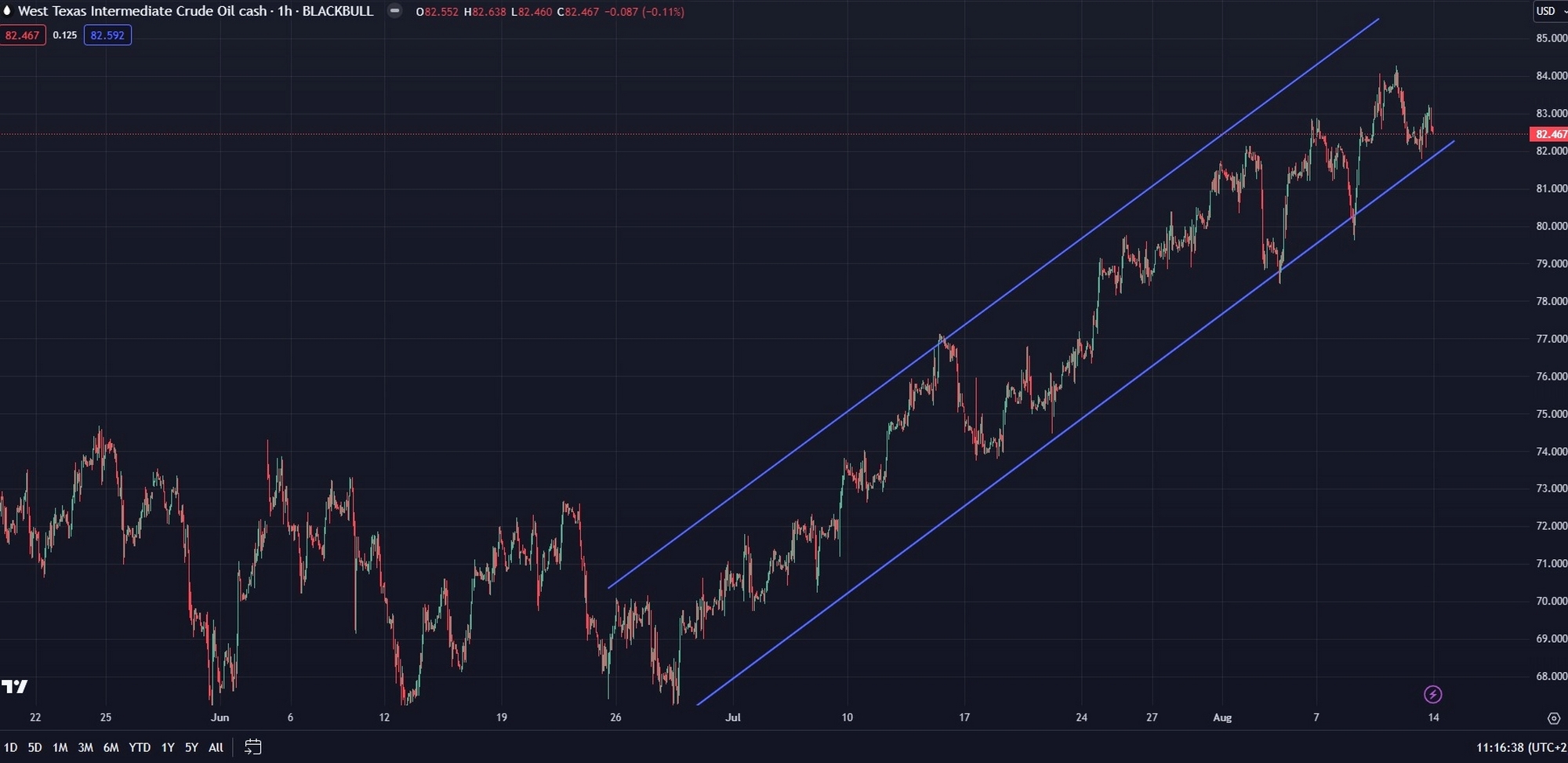Rally of July-August
Oil prices have been increasing for the past six consecutive weeks as a result of, inter alia, production cuts from Saudi Arabia and Russia and a shrinking U.S. stockpile over the said period. With WTI crude going as high as 20% over the past six weeks and Brent 17% in the same span, the Russians and Saudi are holding on to their pledge of supply cuts. While the oil prices are storming to new multi-month highs, the rally has been accompanied by dwindling momentum.
This series of gains come on the back of Saudi’s extension of their voluntary oil production cut of 1 million barrels per day through to the end of September. The growing concerns regarding the undersupply continue as Russia also joins in by opting to cut down its oil exports by 300,000 barrels per day. Brent crude and U.S. WTI crude kept hitting new highs, with Brent going as high as $86.24 and WTI closing at $82.82, prices never seen since the highs of mid-April.
The growing concerns regarding the undersupply continue as Russia also joins in by opting to cut down its oil exports by 300,000 barrels per day.

Top Factors to Watch in the Markets
In 2022 the biggest factor in the markets was geopolitical risks. Shortly after Russia invaded Ukraine, crude oil price soared from $88 per barrel all the way to $130 in March within days. However, in the second half of March, the gains were completely wiped out by a dramatic plunge after the Russians started selling their oil at a significant discount to India and China, neither of which were a part of the Western sanctions against Russia. This year, however, the name of the game seems to be the products. The traders are watching the inventory figures more closely than ever.

Traders are also continuing to monitor the broader economic outlook as the impact of the Federal Reserve’s rate-hiking cycle continues. The general feeling among several investors is that the economic outlook in the short term isn’t that promising. Many are of the belief that this oil rally will come to an end sooner rather than later. As concerns about weak global demand grow, prominent members of the OPEC+, a case in point, Saudi Arabia, stated back in April that their voluntary output cuts were measures put in place to bolster overall market stability.
This year, however, the name of the game seems to be the products. The traders are watching the inventory figures more closely than ever.
Amid many reasons for production cuts, Russian deputy-PM Alexander Novak believed the banking crisis that hit the West early this year was an important factor. He also pointed to “interference with market dynamics,” a Russian expression to describe a Western price cap on Russian oil, as another factor to look at. Unsurprisingly, investors sell out of risk assets tied to commodities such as oil to circumvent any fear of a fresh banking crisis.
China’s Lackluster Recovery
All the more reason for this is the mediocre data coming out of China, the biggest oil importer in the world, with the general economic forecast casting a gloomy figure amid fears of recession and more inflation in the U.S. Fears of slowing growth in China continued this week following a string of weak economic readings on August 10th as to YoY export/import figures. The bearish perspective due to the uninspiring Chinese rebound this year was further reinforced by reports that the country’s biggest developers struggled to meet their debt obligations.
In light of all these, Saudi’s production cuts aimed at countering the global low demand have raised nearly all oil futures expiring in September, thereby deepening the supply restrictions. This, in turn, meant an ensuing rise in demand further tightened up the market.

OPEC’s Report
The reduction in production comes as an addition to a lower supply output policy already set by OPEC and its allies. The broader policy by OPEC+ was meant to maintain oil production at a set threshold while keeping prices profitable throughout the year.
Despite the uncertainties surrounding the 2024 outlook, OPEC recorded a 2.2% oil demand, according to its last monthly report. Pursuant to the monthly statement, OPEC expects world oil demand to rise by 2.25 million barrels per day (bpd) in 2024, a rise of 2.2%, compared with a growth of 2.44 million bpd in 2023. OPEC said in the report, “OPEC+’s preemptive approach and cuts had added stability to the market, based on which the solid oil market fundamentals seen this year are expected to extend into 2024”.
In the report released for August, OPEC stated, “Oil prices were further supported by a significant drop in U.S. crude oil stocks. Moreover, according to the EIA weekly data, U.S. crude stocks declined by 12.4 mb between June 30 and July 28 to their lowest level this year. “In 2024, solid global economic growth amid continued improvements in China is expected to boost consumption of oil,” OPEC reported.
Key Takeaways
The decline in U.S. crude and further cuts from Saudi and Russia bodes for signs of things to come in the price movement of oil in the future. It is safe to say that the current levels provide an excellent profit-taking opportunity to traders having a bearish bias. The buyers, on the other hand, will want to see the price breaking higher than $90, a critical resistance level.



